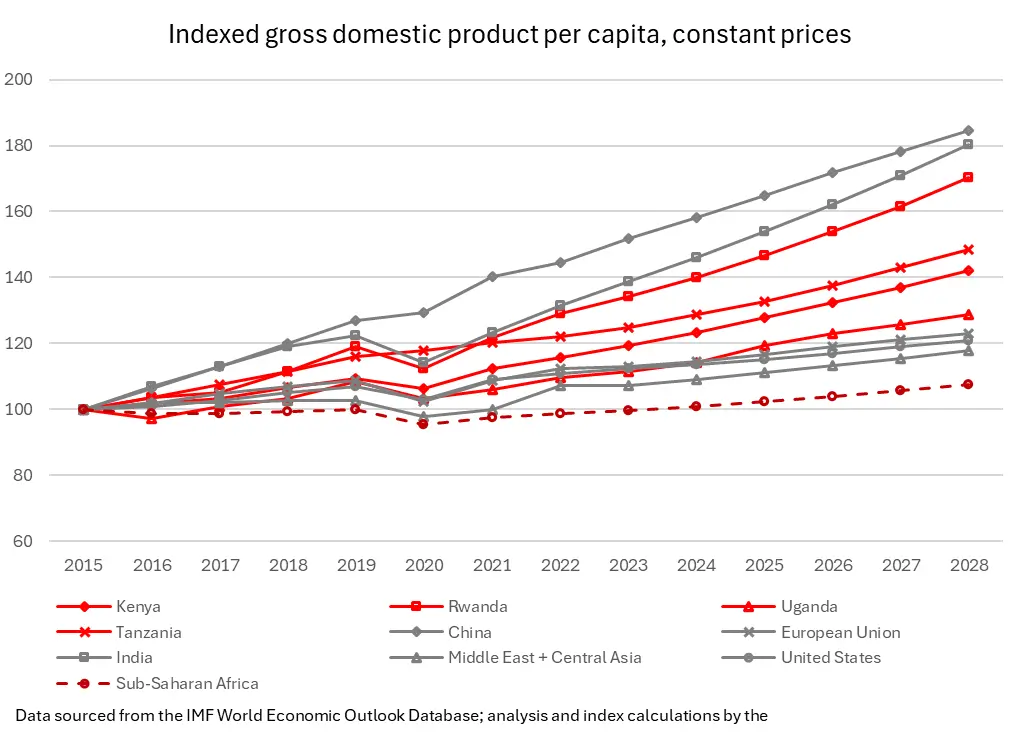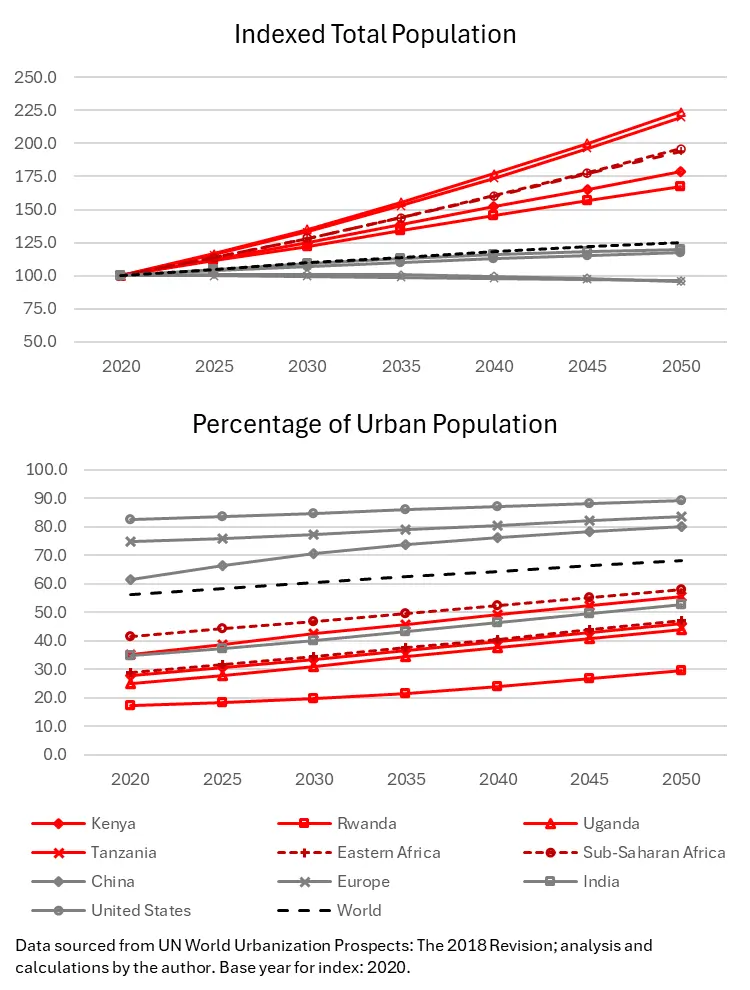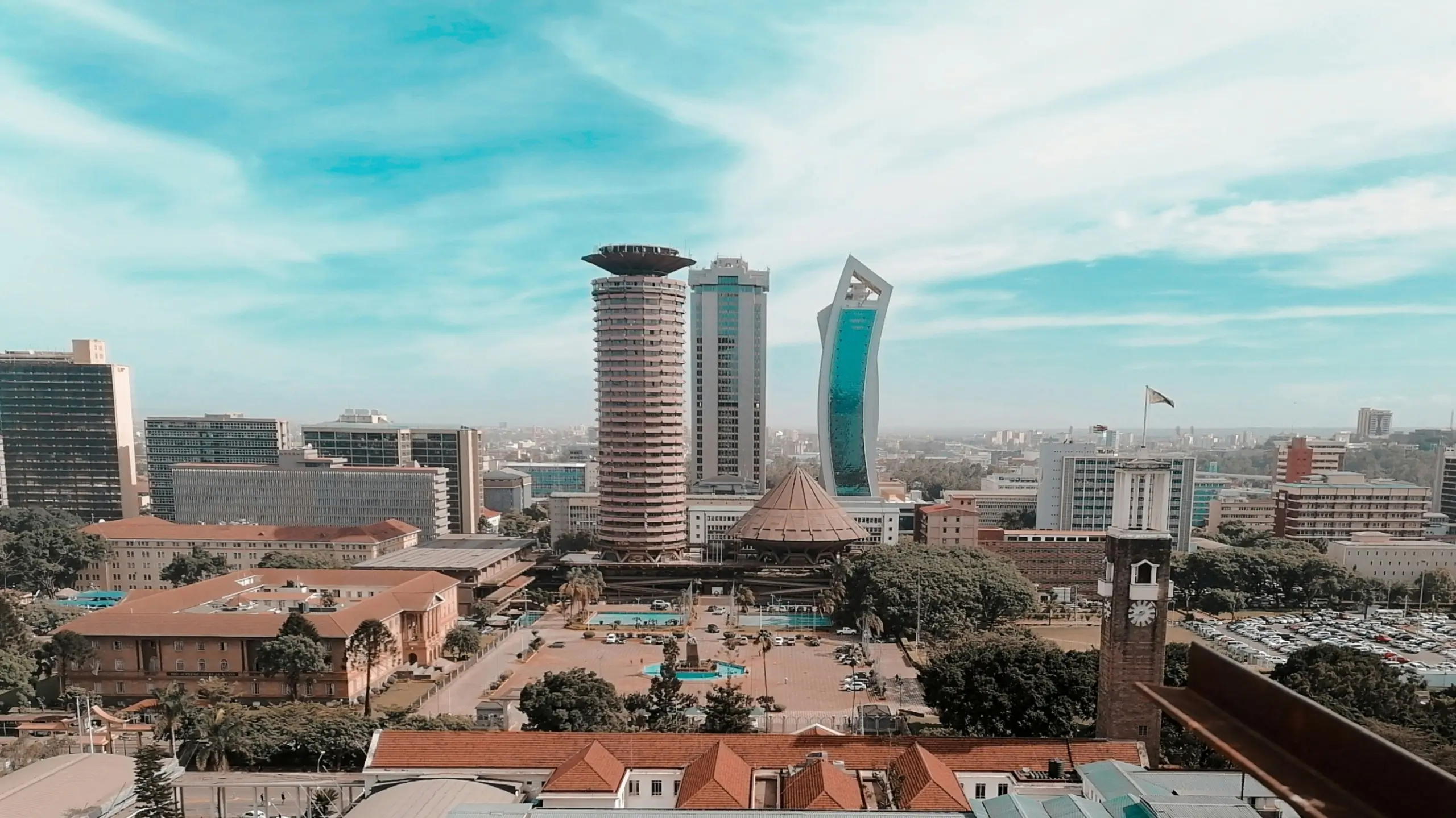- Now is the Time: Unveiling the Potential of East Africa’s Real Estate Market
- 1. Opportunities in East Africa’s Real Estate Market
- 2. Strengths of the East African Real Estate Market
- 3. Risks and Challenges
- 4. Mitigating Risks – Strategies for Safe Investment
- Conclusions
Now is the Time: Unveiling the Potential of East Africa’s Real Estate Market
In recent years, East Africa has emerged as a beacon of growth and opportunity on the global stage, particularly within its real estate sector. Amidst a backdrop of economic resilience and demographic dynamism, the region offers a fertile ground for investment that promises not only returns but also a chance to be part of transformative growth. This blog post aims to dissect the factors making East Africa’s real estate market a timely and promising investment avenue. From burgeoning economic indicators to rapid urbanization and a youthful population poised to reshape the market, we delve into why now is the opportune moment to invest. However, with opportunity comes risk, and we will navigate through the potential challenges, offering insights into mitigating strategies to safeguard investments. Join us as we explore the untapped potential of East Africa’s real estate, guiding both seasoned and novice investors through this burgeoning market.
1. Opportunities in East Africa’s Real Estate Market
Economic Growth and Rising Incomes

The economic landscape of East Africa, as illustrated by the indexed GDP per capita since 2015, paints a picture of substantial growth that is projected to continue outstripping that of more mature economies like the EU and the US. This index, which sets 2015 as a baseline, shows that countries like Uganda, Kenya, Tanzania, and Rwanda are not only eclipsing the average growth rates within the Sub-Saharan African region but are also on a trajectory to achieve an accelerated economic expansion.
As detailed in an Euromonitor International article, the burgeoning economic growth in East Africa is significantly bolstered by foreign direct investments (FDI), particularly from China, which has been instrumental in funding infrastructure and non-service sectors. This investment trend is underpinning the region’s rapid development, with countries like Ethiopia witnessing record-high FDI inflows. The focus on sectors such as construction, agriculture, and manufacturing has not only fueled economic expansion but also improved productivity, especially in agriculture, thus enhancing export capabilities.
While they may not be growing at the same explosive rates experienced by China and India in the last decades, the steady and rapid growth of these East African nations signals rising prosperity. Consequently, rising incomes are likely to follow, underpinning increased consumer spending power and demand for real estate, thus presenting robust opportunities for investment in the region’s burgeoning property market.

Demographic Dynamics
The demographic landscape of East Africa is a key driver for the real estate market. With one of the fastest-growing populations globally, the region is witnessing a significant shift towards urbanization. This demographic shift is not just about numbers; it’s about a transformation in lifestyle, consumption patterns, and housing needs. The urban influx creates a burgeoning demand for residential units, commercial spaces, and infrastructure, laying a fertile ground for real estate investments.
The United Nations’ “World Urbanization Prospects: The 2018 Revision” projects that the region’s population will nearly double from approximately 457 million in 2020 to about 888 million by 2050, a staggering 94% increase. This growth is more pronounced in Kenya, Rwanda, Uganda, and Tanzania, where the combined population is expected to surge by 105% during the same period. This contrast sharply with the global population growth forecast of only 25% and stark declines in regions such as China and Europe
Furthermore, as rural populations migrate to urban centers in search of better employment opportunities, education, and living conditions, East Africa is anticipated to experience the highest increase in urban population among all regions, soaring from around 29% in 2020 to 47.1% by 2050, marking a 63% upsurge. This unprecedented urban growth, coupled with overall population increase, is set to significantly amplify demand for urban real estate, signaling a pressing need for strategic planning and investment in housing and infrastructure development, but also opens up new avenues for both residential and commercial real estate development.
Global Trends and Regional Implications
The global real estate landscape is undergoing significant changes, marked by rising property prices and shifting investment patterns. East Africa, with its strategic position and robust growth forecasts, stands to capitalize on these trends. The region’s real estate sector is poised for expansion, fueled by an influx of foreign investment, technological advancements in property management, and infrastructural development. As urbanization accelerates and middle-class incomes rise, the demand for residential and commercial properties is expected to surge. This scenario presents a compelling opportunity for investors to tap into East Africa’s real estate market, leveraging global trends for regional advantage.
A recent report by the Ifo Institute underscores the anticipated surge in the East African housing market, projecting it to outpace all other regions in terms of growth. This significant forecast aligns with the dynamic changes in global real estate, highlighting East Africa’s emerging prominence. Such projections not only validate the region’s investment appeal but also emphasize the strategic importance of tapping into its burgeoning real estate sector.
2. Strengths of the East African Real Estate Market
Government Initiatives and Policies
East African governments are actively creating environments conducive to real estate growth. For example, initiatives that provide tax incentives, facilitate property registrations, and prioritize affordable housing have been set in motion. These measures aim to stimulate both local and foreign direct investment in the sector.
As highlighted in Capital FM’s article “Kenya, East Africa real estate sector ready for investments” the region is growingly appealing to international real estate funds and institutional investors, driven by a dynamic macro-economic environment and opportunities for niche market exploration. The sector, particularly in industrial real estate like warehousing, is noted for its resilience and performance, offering new investment frontiers. Nairobi, for example, as East Africa’s hub, has seen increased business registrations, indicating a rising demand in the commercial sector.
Special Economic Zones (SEZs) in East Africa are designated areas intended to attract foreign investments by offering more favorable tax, trade, and regulatory environments. These zones aim to boost economic growth by encouraging export-oriented industrialization, creating jobs, and facilitating infrastructure development.
Foreign Investment Boosts East African Real Estate Landscape

East Africa is experiencing an influx of foreign capital, pouring into diverse industries and shaping the region’s real estate landscape. With an average annual inflow of $250-300 million over the past five years, the region enjoys the highest Foreign Direct Investment (FDI) in Africa, according to the United Nations Economic Commission for Africa (UNECA). This trend shows no signs of slowing down, with FDI expected to reach 2.8% of the region’s GDP by 2024.
Several key industries are driving this investment boom. The UNCTAD’s Economic Development in Africa Report 2023 outlines Africa’s potential to integrate into global supply chains in sectors such as automotive, mobile telephony, renewable energy, and healthcare. It also notes that recent global challenges, including trade disruptions and the pandemic, have prompted manufacturers to seek diverse production locations, highlighting Africa’s emerging role in the global market. Governments are prioritizing infrastructure development, attracting billions for projects like roads, railways, ports, and energy grids.
This translates to increased demand for commercial real estate near transport corridors, including warehouses, logistics hubs, and offices. Tourism, another major player, thrives on East Africa’s natural beauty and diverse wildlife, bolstering investment in upscale hotels, resorts, and eco-lodges, particularly in Kenya, Tanzania, and Rwanda. Additionally, the region’s young, tech-savvy population fuels investment in tech hubs, innovation centers, and co-working spaces, boosting demand for modern office spaces and mixed-use developments in major cities.
As a result, specific real estate asset classes are witnessing significant growth. Logistics & Industrial, fueled by e-commerce and regional trade integration, sees rising demand for warehouses, distribution centers, and light manufacturing facilities. The tourism boom drives investment in hotels, resorts, and serviced apartments across various price points. Finally, Grade A Office Space experiences increasing demand due to expanding businesses and co-working spaces.
3. Risks and Challenges
The prospect of investing in East African real estate comes with undeniable potential for growth, yet it is accompanied by several risks and challenges that must be carefully navigated. Political and economic uncertainties, complex land ownership structures, and infrastructure gaps are among the primary concerns that investors face in this developing region.
Political instability and economic vulnerability
These uncertainties loom large, with potential political instability and shifting government policies that can dramatically impact property values, development timelines, and investor confidence. Additionally, the inherent vulnerabilities of emerging economies, such as susceptibility to economic downturns, inflation, interest rate fluctuations, and currency devaluation, pose substantial risks to investments.
Infrastructure and Regulatory Challenges
The region’s infrastructure development, or lack thereof, is another critical challenge. Limited access to essential services like power, water, and transportation can severely impede real estate projects. Furthermore, navigating the complex landscape of land ownership in East Africa adds another layer of complexity, particularly for foreign investors facing restrictions and the intricacies of leasehold versus freehold ownership. The variability in leasehold terms, renewal processes, and land use restrictions across countries complicates investment decisions further. Moreover, issues such as limited transparency and accessibility to reliable market data, especially in smaller markets, and the presence of corruption and bureaucratic hurdles, can lead to longer timelines and potential delays, complicating the investment process.

4. Mitigating Risks – Strategies for Safe Investment
In the dynamic landscape of East African real estate, understanding and mitigating risks is crucial for investors seeking to capitalize on the region’s opportunities while safeguarding their investments. Here are strategic approaches to navigate the challenges effectively:
Legal Due Diligence
At the heart of a secure investment strategy in East African real estate lies thorough legal due diligence. The complexity and diversity of local laws and regulations governing land ownership, property rights, and foreign investment necessitate a deep dive into the legal framework of the target market. Investors must ensure they are well-versed in the intricacies of leasehold versus freehold ownership, restrictions on foreign ownership, zoning laws, and environmental regulations. Engaging with legal professionals who specialize in the local real estate market can provide invaluable insights and guidance, helping investors avoid legal pitfalls and ensure compliance with all regulatory requirements.
The World Bank’s Doing Business reports serve as invaluable resources for insights into property registration processes and land governance improvements, offering a comprehensive overview of regulatory changes and reforms that enhance the ease of doing business in various countries.
Local Partnerships and Expertise
Forging partnerships with local entities or consulting with local experts can dramatically improve an investor’s ability to navigate the East African real estate market. Local partners bring to the table a nuanced understanding of the market dynamics, cultural insights, and often, a network of contacts that can facilitate smoother transactions, from acquisition through to development and management of properties. These relationships can also offer a layer of protection against common pitfalls by providing local intelligence that might not be readily accessible to foreign investors.
Insurance and Financial Planning
A comprehensive approach to insurance and financial planning is paramount to mitigating risks associated with real estate investment in East Africa. Securing appropriate insurance coverage can protect against a range of risks, including property damage, liability, and even loss of rental income. Concurrently, sound financial planning ensures that the investment is structured in a way that aligns with the investor’s overall financial goals, taking into account currency risks, potential tax implications, and the need for liquidity. This approach helps in creating a robust investment that can withstand the volatility of emerging markets.
Diversification of Investments
For investors with the financial capacity, diversification offers a strategic means to spread risk and capitalize on the growth potential within different sectors of the East African real estate market. This could mean investing across various countries within the region, or diversifying into different types of real estate, such as residential, commercial, industrial, or hospitality. Diversification not only mitigates risk but also provides the investor with a hedge against market fluctuations in any single sector or geographic area.
Alternative Investment Vehicles
For those looking for exposure to the East African real estate market without the complexities of direct investment, Real Estate Investment Trusts (REITs) present a viable alternative. REITs offer investors the opportunity to invest in a diversified portfolio of real estate assets, with the added benefits of professional management and liquidity. While the REIT market in East Africa is still developing, it represents a growing sector that can offer investors a more accessible entry point into the real estate market. Interested investors should research platforms and financial institutions that provide listings and information on REITs active in East Africa, as this can offer insights into the available options and their performance.
By embracing these strategies, investors can navigate the complexities of the East African real estate market, minimizing risks while positioning themselves to capitalize on the growth potential the region offers.
Conclusions
Investing in East Africa’s real estate sector is not merely an opportunity but a venture into a region brimming with growth prospects and transformative potential. The allure of East Africa lies in its dynamic economic landscape, characterized by rapid urbanization, a burgeoning middle class, and significant infrastructural developments. These factors collectively create a conducive environment for real estate investments across residential, commercial, and industrial segments.
The region’s commitment to enhancing connectivity and infrastructure, through initiatives like the African Continental Free Trade Area (AfCFTA), further amplifies its attractiveness to investors. Such developments not only improve market access but also stimulate regional economic integration, opening up a broader canvas for real estate investment and development. Moreover, the increasing embrace of technology and digitalization in East Africa is revolutionizing the real estate sector, offering innovative solutions to age-old challenges and unlocking new investment frontiers.
However, the path to realizing these opportunities is paved with challenges that demand strategic navigation. Political, economic, and regulatory uncertainties can pose risks, but with comprehensive due diligence, these can be effectively managed or mitigated. Engaging in robust legal and market research, understanding the intricacies of local environments, and leveraging the expertise of local partners are critical steps in aligning investment strategies with the region’s realities.
Moreover, the strategic application of technological advancements in property management, market analysis, and customer engagement can enhance operational efficiencies and drive growth. Investors ready to harness the power of technology will find themselves at the forefront of reaping the benefits of East Africa’s real estate market.
In conclusion, the timing for investing in East Africa’s real estate sector is opportune, supported by a unique blend of economic growth, demographic shifts, and infrastructural advancements. By adopting a vigilant approach to due diligence, fostering local collaborations, and embracing innovation, investors can navigate the complexities of the market, positioning themselves to capitalize on the substantial returns that East Africa’s real estate sector promises. With the right strategies, the risks inherent in emerging markets can be transformed into rewarding opportunities, making now an ideal time to invest in East Africa’s burgeoning real estate landscape.






Join The Discussion